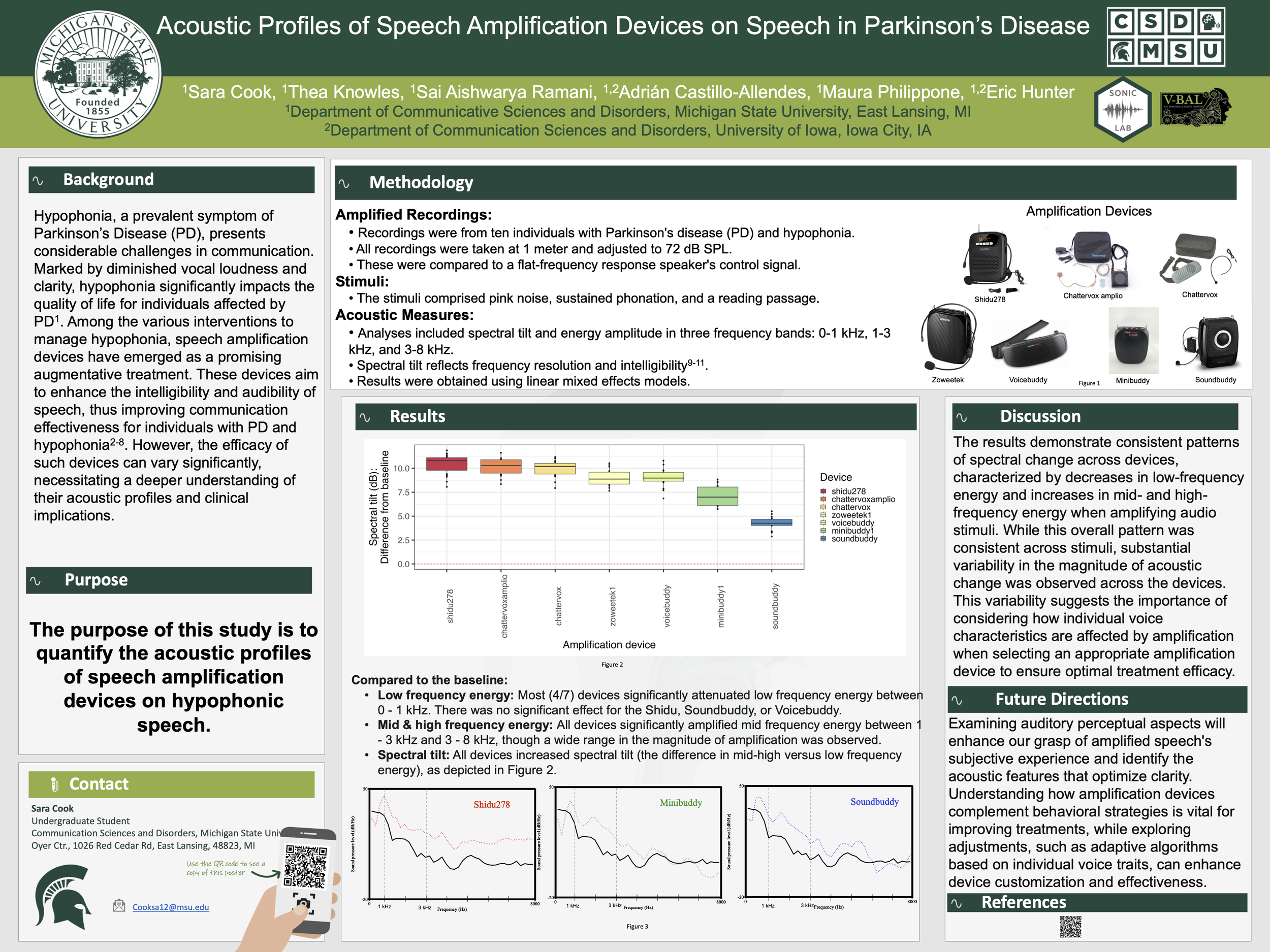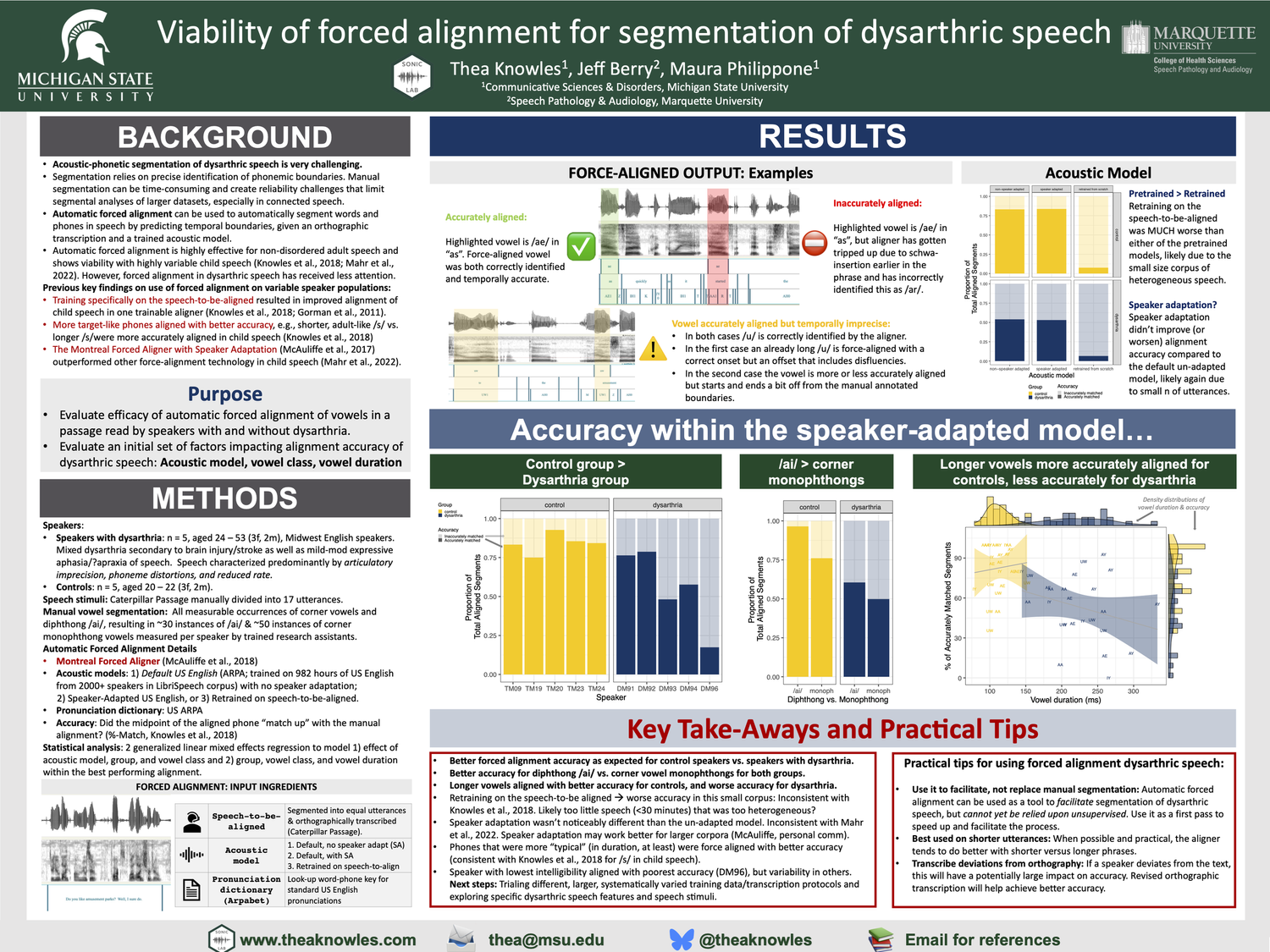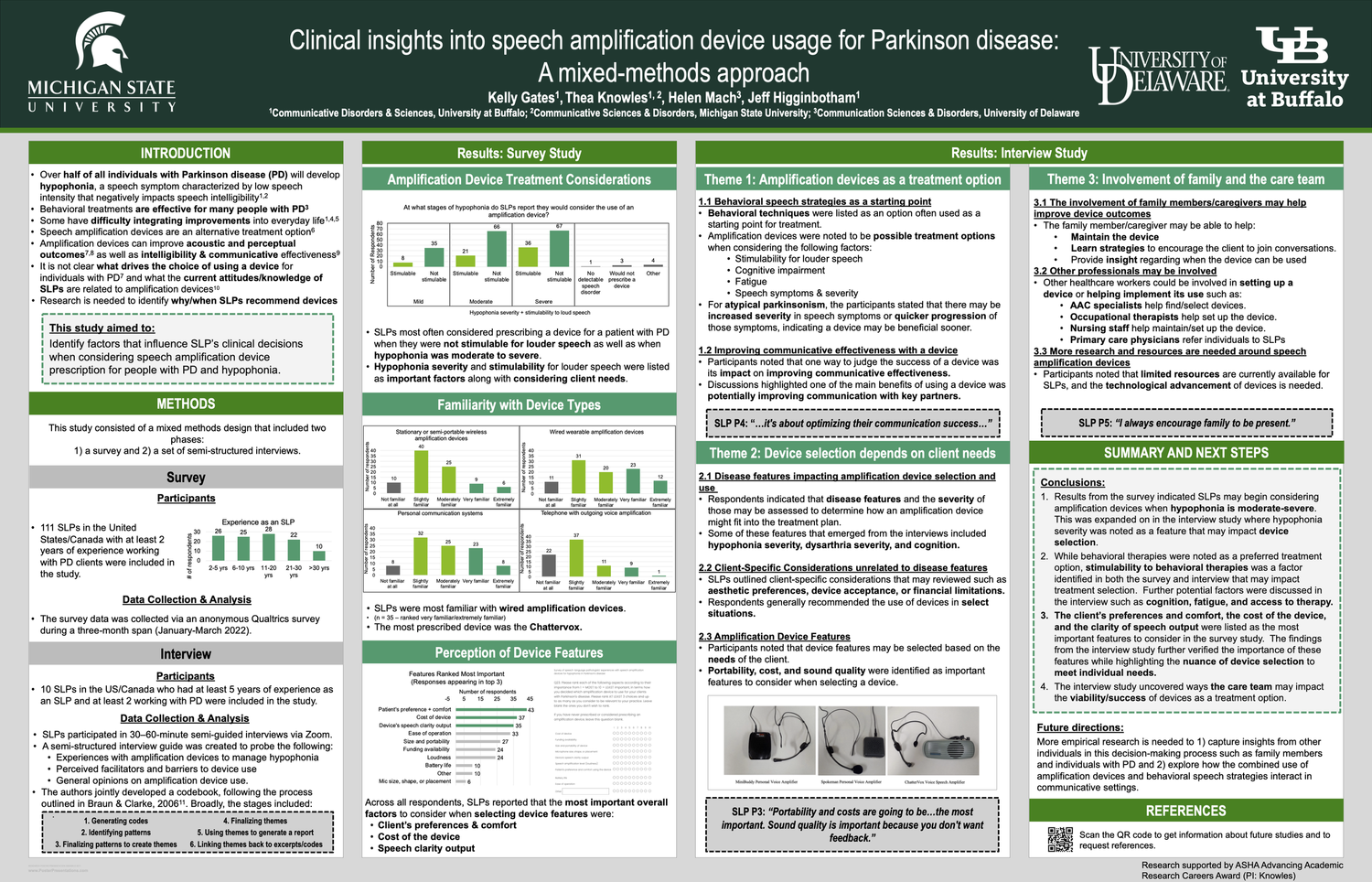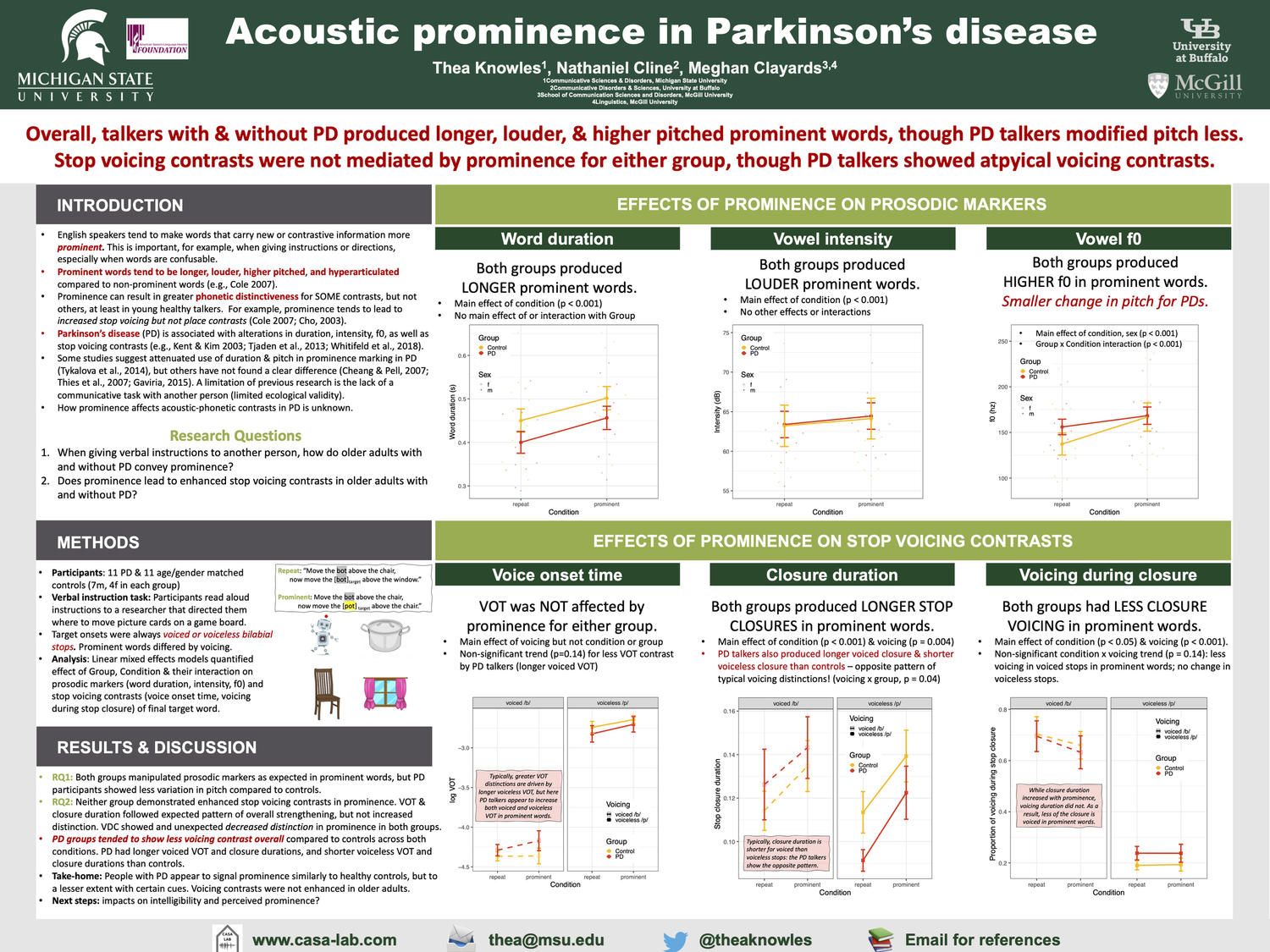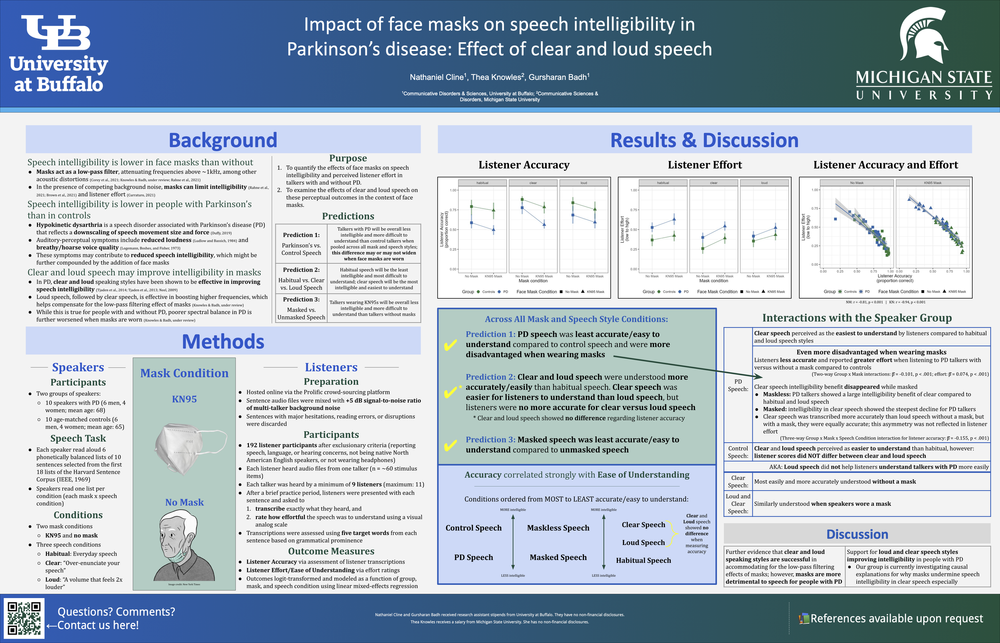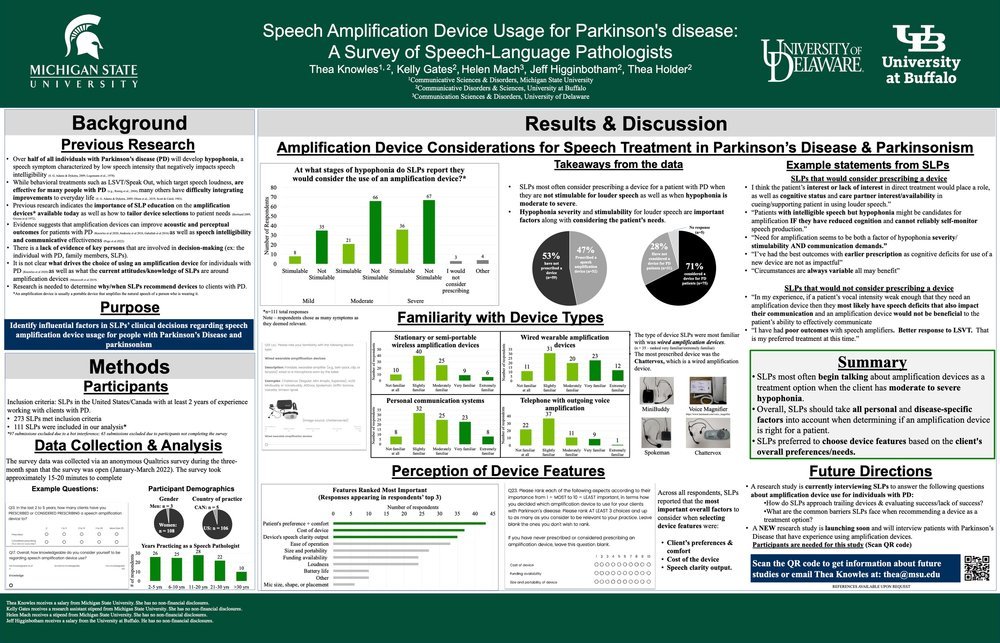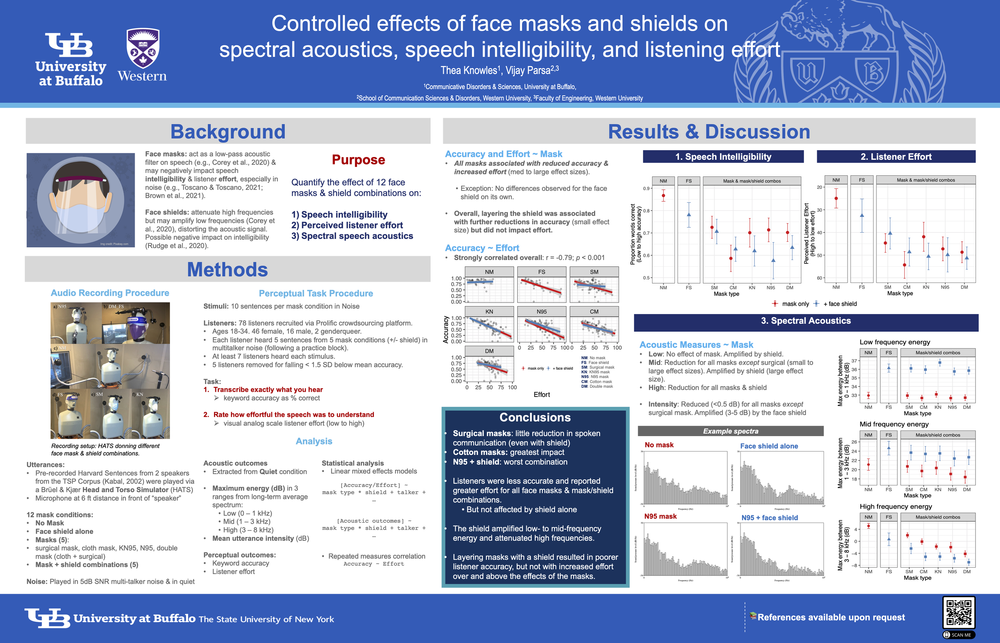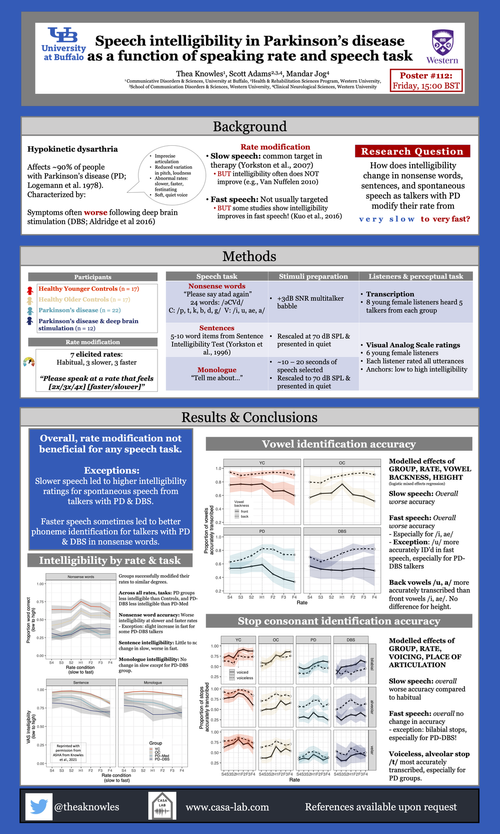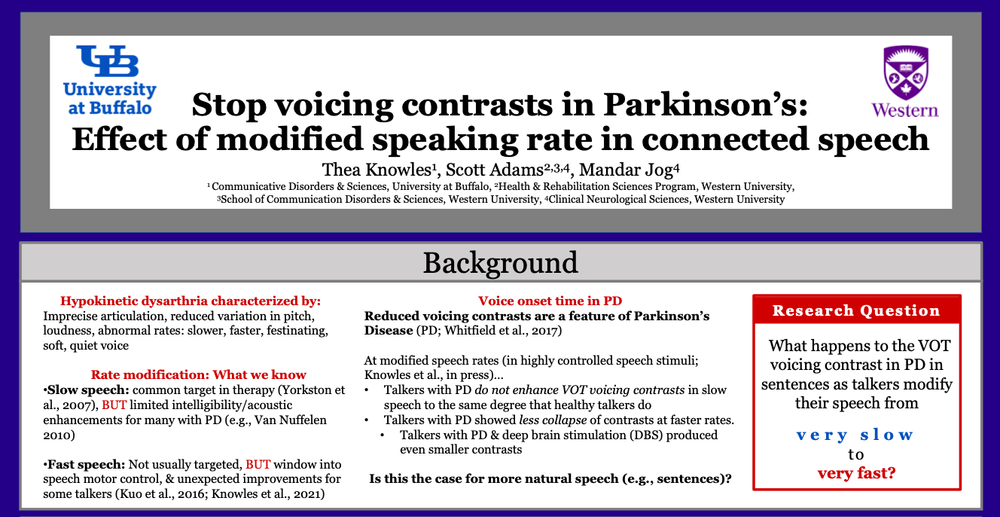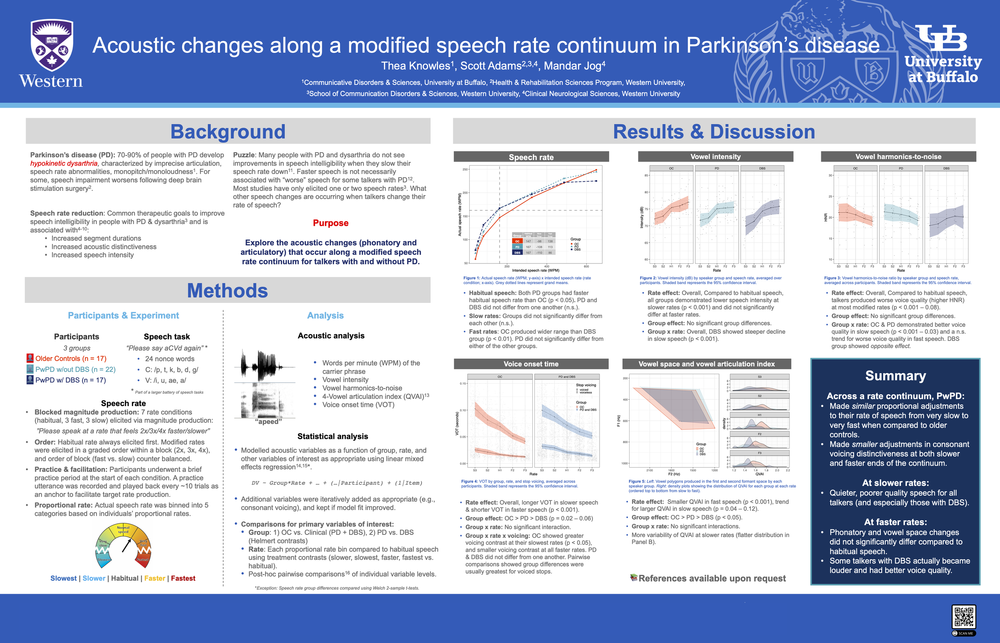Speech changes in Parkinson’s disease
About
Up to an estimated 90% of individuals with Parkinson’s disease (PD) experience changes to their speech and voice over the course of the disease (Logemann et al., 1978; Müller et al., 2001; Mutch et al., 1986). Research in our lab investigates how this manifests acoustically (that is, changes to the timing, frequency, and amplitude characteristics of speech and voice sounds) and how different communication demands, tasks, and management strategies impact the ability to be understood. Some topics we investigate under this arm of research include:
How communicative demand affects the ability to convey important information when speaking
How face masks impact the ability to communicate and how these challenges might be overcome
How speech rate, clarity, and loudness can be modified to improve speech outcomes
How speech amplification devices may (or may not) be used to compensate for reduced speech loudness
Presentations
Publications
Knowles, T., Clayards, M., & Cline, N. (2025). Acoustic prominence production in Parkinson's disease when there is a shared communicative goal. The Journal of the Acoustical Society of America, 158(2), 1508-1525. DOI: https://doi.org/10.1121/10.0039048
Knowles, T., Adams, S.G., & Jog, M. (2024). Effects of speech rate modifications on phonatory acoustic outcomes in Parkinson disease. Frontiers in Human Neuroscience, 18. DOI: 10.3389/fnhum.2024.1331816
Cline, N., Knowles, T., & Badh, G. (2023). Effect of Face Masks and Speech Style on Speech Intelligibility and Listener Effort in Parkinson’s Disease. American Journal of Speech-Language Pathology, 32(5), 2282-2296. DOI: 10.1044/2023_AJSLP-23-00085
Badh, G., & Knowles, T. (2023). Acoustic and perceptual impact of face masks on speech: A scoping review. PL0S ONE, 18(8), e0285009. DOI: 10.1371/journal.pone.0285009
Knowles, T., & Badh, G. (2023). Impact of Face Masks on Speech in Parkinson’s Disease: Effect of Clear and Loud Speech Styles. Journal of Speech, Language, and Hearing Research, 1–24. DOI: 10.1044/2022_JSLHR-22-00291
Aveni, K., Ahmed, J., Borovsky, A., McRae, K., Jenkins, E.M., Sprengel, K., Fraser, J.A., Orange, B.J, Knowles, T., Roberts, C.A. (2023). Predictive language comprehension in Parkinson’s disease. PLoS ONE, 18(2), e0262504. DOI:10.1371/journal.pone.0262504
Knowles, T., Badh, G. (2022). The impact of face masks on spectral acoustics of speech: Effect of clear and loud speech styles. The Journal of the Acoustical Society of America 151(5), 3359-3368. DOI:10.1121/10.0011400
Badh, G., Knowles, T. (2022). Acoustic and perceptual impact of face masks on speech: A scoping review (preprint). OSF. DOI:10.31219/osf.io/fpsu2
Knowles, T., Adams, S.G., Jog, M. (2021). Variation in speech intelligibility ratings as a function of speech rate modification in Parkinson’s disease. Journal of Speech, Language, and Hearing Research. doi:10.1044/2021_JSLHR-20-00593.
Knowles, T., Adams, S.G., Jog, M. (2021). Speech rate mediated vowel and stop voicing distinctiveness in Parkinson’s disease. Journal of Speech, Language, and Hearing Research, 64(11), 4096-4123. DOI:/10.1044/2021_JSLHR-21-00160.
Adams, S.G., Kumar, N., Rizek, P., Hong, A., Zhang, J. Senthinathan, A., Mancinelli, C., Knowles, T., Jog, M. (2020). Efficacy and acceptance of a Lombard-response device for hypophonia in Parkinson’s disease. The Canadian Journal of Neurological Sciences, 47(5), 634-641. DOI:10.1017/cjn.2020.90.
Abeyesekera, A., Adamas, S.G., Mancinelli, C., Knowles, T., Gilmore, G., Delrobaei, M., Jog, M. (2019). Effects of deep brain stimulation of the subthalamic nucleus settings on voice quality, intensity, and prosody in Parkinson’s disease: Preliminary evidence for speech optimization. Canadian Journal of Neurological Sciences, 46(3), 287-294. DOI:10.1017/cjn.2019.16
Knowles, T. (2019). Changes in Speech Intelligibility and Acoustic Distinctiveness Along a Speech Rate Continuum in Parkinson’s Disease. [Doctoral dissertation, The University of Western Ontario]. https://ir.lib.uwo.ca/etd/6357/
Knowles, T., Clayards, M., Sonderegger, M. (2018). Examining factors influencing the viability of automatic acoustic analysis of child speech. Journal of Speech, Language, and Hearing Research, 61(10), 2487-2501. DOI:10.1044/2018_JSLHR-S-17-0275

